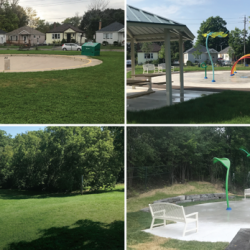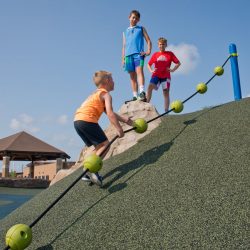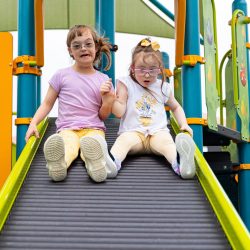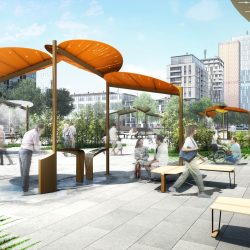Inclusive Playground Design Guide
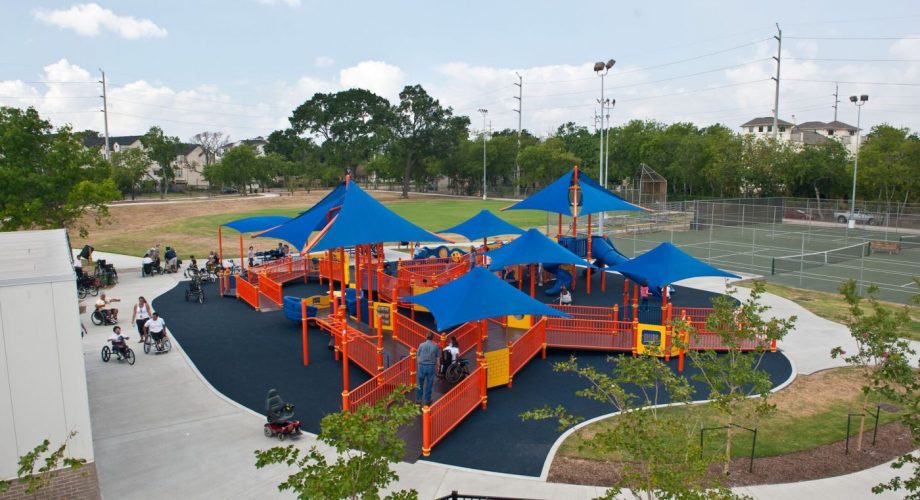
Designing Inclusive Playgrounds
Our playground supplier, Landscape Structures, has put together this informative Inclusive Playground Design Guide. Landscape Structures’ commitment to A Higher Level of Inclusive Play™ means going beyond a checklist approach to inclusive playground design and pushing past the minimum requirements placed for playgrounds by the Canadian Standards Association (CSA). Landscape Structures goes beyond mere accessibly to include elements designed for children with down syndrome, sensory processing disorders, and visual and hearing impairments.
A focus on the following elements will ensure your play space is welcoming and supporting to all.
Play Experience
Playgrounds can offer many opportunities for children to further develop physical, cognitive, sensory and social skills. An inclusive playground design offers a multitude of play experiences to build these developmental benefit skills.
Sensory Stimulation
A sensory-rich inclusive play environment can bring children together while providing each one with the sensory experiences they seek. Sensory activities can include a sand station for fine motor tactile stimulation or our Roller Slide and Roller Table for a bumpy sensation as a child slides down or across.

Swinging, Spinning & Sliding
Besides being fun, these activities sharpen our internal senses, including vestibular (awareness of how our body moves through space and against gravity) and proprioception (awareness of body position and how much force is needed for an activity).
Inclusive playground elements like our We-Go-Swing®, We-Go-Round® and OmniSpin® Spinner gives users the opportunity to swing, spin and play face-to-face. It also offers exterior and interior engagement options so children can participate and choose how they want to move.
Social & Imaginative Play
As children challenge themselves physically, they also learn how to manage joy and frustration, friendship and conflict, through play with others. Learning cooperation and how the world works around them are invaluable life skills that begin during play.
Imaginary play is where kids experiment with rules and roles and identify their passions. Whether engaged in parallel play, quiet play or active social play, an inclusive playground provides plenty of opportunities for children to interact face-to-face and use their imagination.
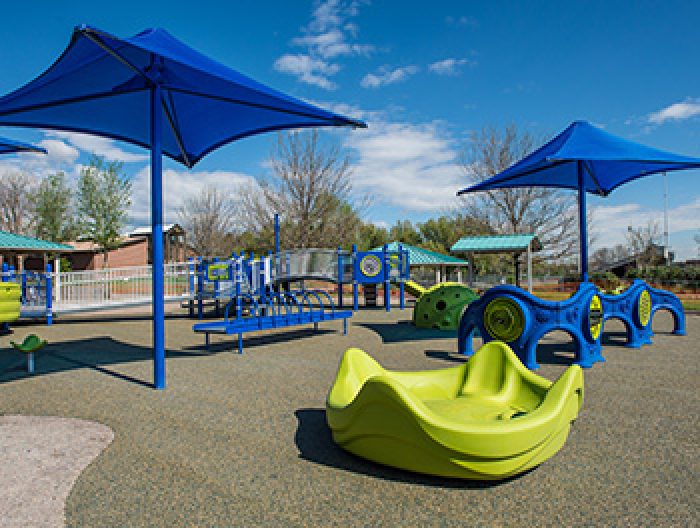
Variability
By including a variety of options on a play space – through different playground elements and ways in which a child can engage with those elements – there will be developmentally appropriate challenges that meets kids wherever they are at while letting them build comfortably on the skills they already possess.
By striking this balance, children are encouraged to challenge themselves in ways they can control and manage. Risk, adventure and challenge are important elements of play for all ages and abilities. Challenge creates the opportunity for a child to gain a new skill and have the sensation of success when it’s mastered. Without risk and challenge, there is no feeling of success.
Safety, Comfort & Access
Creating a welcoming, safe and accessible environment is just as important as the play equipment you put in it. A well-designed environment makes the space more comfortable and user-friendly for children and families of all ages and abilities to use.
Fencing
A fence can help define and contain the activity area, providing a sense of comfort to both children and their parents. With the comfort and safety a fence provides, caregivers can allow their children to roam the playground and play freely.
Signage
Clear and easy to read signage makes people feel more comfortable when they have a good understanding of their surroundings. Pictures and symbols are an effective way for non-verbal, speech-challenged, and early-learning individuals to communicate with friends and caregivers. Placing a Symbol Communication Sign at the entrance to a play area ensures that everyone can express themselves!
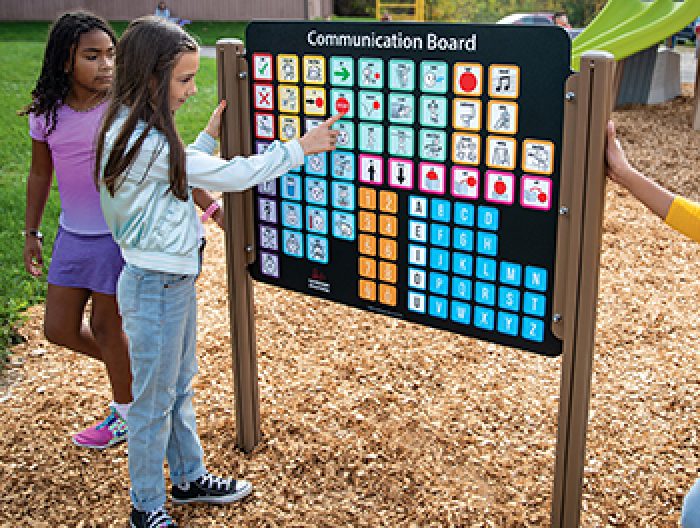
Shade
Children’s tolerance levels of sun and heat vary greatly. Providing commercial shade, either natural or artificial, increases comfort and safety on the playground. Also, it’s not uncommon for children with disabilities to be on medication that does not allow them to regulate heat. Adequate shade will keep everyone safe and playing as long as possible.
Seating
Benches with backs and arm rests, tables and game tables may be strategically located around the play area (preferably in shaded areas) for supervision, resting, snack/picnic breaks and to promote multigenerational socialization.
Pathways
Accessible pathways that transition between activity areas should
be well marked, short and direct. The Americans with Disabilities Act (ADA) requires a minimum 3 ft width—we encourage 60 inches so a pathway is wide enough for a wheelchair and someone walking next to them.
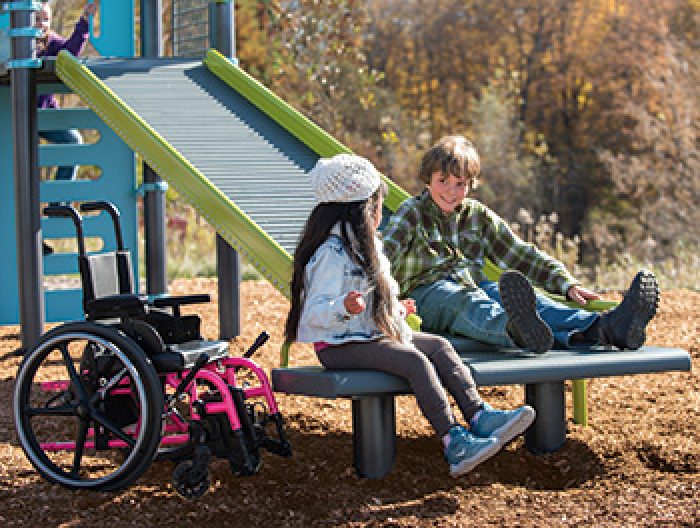
Ramps & Transfer Points
Wheelchair-accessible ramps and transfer modules to higher play or sliding events offers more equitable access and encourages interactive play among kids and adults of all abilities. For example, a transfer platform at the end of our Rollerslide Exit Bench allows a child to move off to the side without holding up play. This allows kids to get their feet under them and settle themselves without the stigma of stopping others from going down the slide.
Protective Surfacing
A truly inclusive playground should incorporate a unitary surface such as poured-in-place surfacing or rubber mats/tiles on the accessible routes.
At ABC Recreation, we believe all kids are created equal.
That’s why we create play environments using inclusive playground equipment that welcome kids and families of all abilities to learn, play and grow together. To learn more about our inclusive playgrounds or to start your own project, contact our knowledgeable team today!

